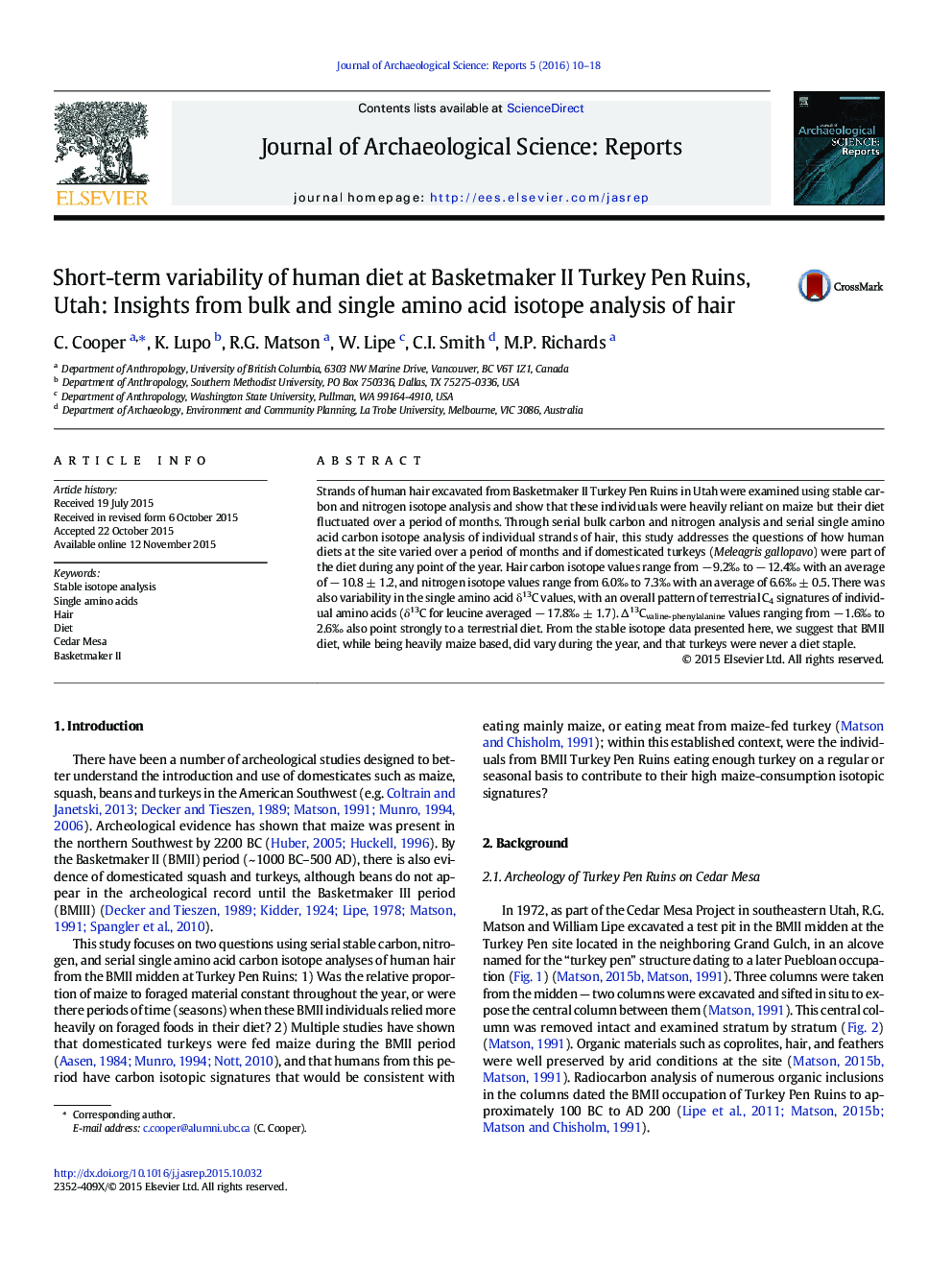| Article ID | Journal | Published Year | Pages | File Type |
|---|---|---|---|---|
| 7445722 | Journal of Archaeological Science: Reports | 2016 | 9 Pages |
Abstract
Strands of human hair excavated from Basketmaker II Turkey Pen Ruins in Utah were examined using stable carbon and nitrogen isotope analysis and show that these individuals were heavily reliant on maize but their diet fluctuated over a period of months. Through serial bulk carbon and nitrogen analysis and serial single amino acid carbon isotope analysis of individual strands of hair, this study addresses the questions of how human diets at the site varied over a period of months and if domesticated turkeys (Meleagris gallopavo) were part of the diet during any point of the year. Hair carbon isotope values range from â 9.2â° to â 12.4â° with an average of â 10.8 ± 1.2, and nitrogen isotope values range from 6.0â° to 7.3â° with an average of 6.6â°Â ± 0.5. There was also variability in the single amino acid δ13C values, with an overall pattern of terrestrial C4 signatures of individual amino acids (δ13C for leucine averaged â 17.8â°Â ± 1.7). Î13Cvaline-phenylalanine values ranging from â 1.6â° to 2.6â° also point strongly to a terrestrial diet. From the stable isotope data presented here, we suggest that BMII diet, while being heavily maize based, did vary during the year, and that turkeys were never a diet staple.
Related Topics
Social Sciences and Humanities
Arts and Humanities
History
Authors
C. Cooper, K. Lupo, R.G. Matson, W. Lipe, C.I. Smith, M.P. Richards,
